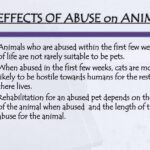Across the globe, the evolving panorama of animal cruelty legislation has been shaped by a tapestry of historical events, cultural shifts, and advocacy movements. These developments have incited profound transformations in both legislation and societal attitudes towards animals. To fully appreciate the current landscape of animal rights, it is essential to delve into significant milestones that have undeniably influenced animal welfare laws.
In the early 19th century, a pivotal event emerged in England with the establishment of the Society for the Prevention of Cruelty to Animals (SPCA) in 1824. This institution marked a crucial turning point, galvanizing public awareness and prompting the formulation of laws aimed at safeguarding animals from cruelty. The formation of the SPCA represented a burgeoning consciousness about the ethical treatment of animals, which was previously overshadowed by utilitarian perspectives on their existence. The passage of the Cruelty to Animals Act in 1835, which outlawed some forms of animal mistreatment, was a direct outcome of this newfound advocacy.
As the 19th century progressed, the conversation surrounding animal rights expanded beyond the confines of Britain. The United States, inspired by England’s initiatives, witnessed the founding of the American Society for the Prevention of Cruelty to Animals (ASPCA) in 1866. This organization not only focused on preventing cruelty but also worked diligently to bring systemic change through legislative efforts. The ASPCA’s collaboration with local governments laid the groundwork for various state-level animal cruelty statutes and fostered an environment where animal welfare became a recognized societal concern.
The early 20th century heralded additional milestones in global animal rights discourse. The formation of the British Union for the Abolition of Vivisection in 1898 generated significant opposition to animal experimentation, setting the stage for subsequent campaigns aimed at regulating and ultimately prohibiting unnecessary animal testing. The proliferation of such organizations highlighted a rising tide of activism dedicated to curbing the exploitation of animals in laboratories.
The aftermath of the Second World War further illuminated the need for comprehensive animal welfare legislation. As nations reconstructed and redefined their values, an emphasis on humane treatment emerged alongside broader social reform movements. In 1959, the UK passed the Cruelty to Animals Act, significantly regulating animal experimentation and establishing welfare guidelines. This legislative reform would echo around the globe, influencing countries in Europe and beyond to follow suit with similar regulations aimed at curtailing abusive practices in scientific research.
In the late 20th century, the landscape shifted dramatically with the rise of the animal rights movement, encapsulated in a philosophy that rejected the commodification and exploitation of animals entirely. Influential texts, such as Peter Singer’s “Animal Liberation,” published in 1975, championed the cause of animal rights and propelled discussions into the mainstream. This book not only challenged pre-existing notions of human supremacy but also ignited a movement advocating for the legal recognition of non-human animals as sentient beings deserving of protection.
The ensuing decade saw the introduction of various pieces of legislation globally. In 1994, the U.S. Congress passed the Animal Welfare Act Amendment, mitigating some aspects of animal suffering in testing laboratories and marking a renewed legislative effort in safeguarding animal rights. International treaties, such as the European Convention for the Protection of Animals Kept for Farming Purposes in 1976, also reflected this emerging consciousness, delineating standards for the humane treatment of farm animals.
Entering the 21st century, the internet became a catalyst for the animal rights movement, enabling activists across the globe to collaborate more effectively than ever before. Social media campaigns gained traction, raising awareness about issues such as puppy mills, factory farming, and animal testing with unprecedented speed. The dissemination of shocking images and firsthand accounts of animal suffering helped galvanize public sentiment and led to significant legislative changes in numerous countries, including bans on practices such as animal fighting, cosmetic testing on animals, and the use of wild animals in circus acts.
One notable example is the surge of legal changes in countries like Spain, which in recent years has begun to recognize the rights of animals as sentient beings. In 2015, the Spanish Parliament passed a law declaring that animals are not mere possessions but sentient beings, thus initiating a paradigm shift in the approach to animal welfare within the nation. This marked the beginning of a more progressive chapter in animal rights legislation, one that reverberated throughout Europe.
Moreover, landmark cases, such as the decision by a court in Argentina to grant legal personhood to an orangutan in a Buenos Aires Zoo, further demonstrated an evolving legal understanding of animals. This case, alongside others, illustrates the potential for legal frameworks to expand and adapt as societal values evolve. Such instances compel lawmakers to consider the ethical implications of their decisions regarding animal welfare, emphasizing the necessity of long-term views on how animals should be treated in various contexts.
As we reflect on the historical events that have shaped animal cruelty legislation globally, it is clear that these milestones have been foundational in carving out a path toward greater awareness and ethical considerations regarding animal treatment. They serve as a testament to the powerful interplay between activism, legislation, and societal change. The quest for comprehensive animal rights and welfare involves continuous dialogue, where the voices of those who cannot speak for themselves need to be amplified. As we move forward, the steps taken today will inevitably sow the seeds for future transformations in how society perceives and treats its most vulnerable inhabitants.







